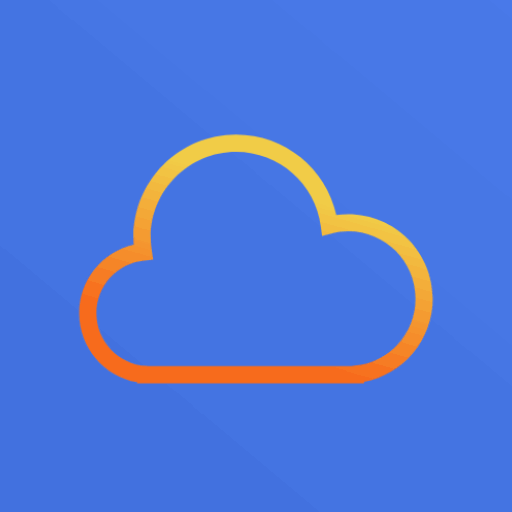Description

ATLAS.ti

Plaace
Comprehensive Overview: ATLAS.ti vs Plaace
ATLAS.ti and Plaace are two distinct software products designed for very different purposes and markets. Below is a comprehensive overview of each, touching on their primary functions, target markets, market share, user base, and key differentiating factors.
ATLAS.ti
a) Primary Functions and Target Markets
- Primary Functions: ATLAS.ti is a powerful qualitative data analysis (QDA) software used for analyzing textual, graphical, audio, and video data. Its primary functions include coding textual or multimedia data, annotating and visualizing relationships among data components, and generating reports based on the analysis.
- Target Markets: The main users of ATLAS.ti are researchers and analysts in academic settings, social sciences, market research, and qualitative research sectors. This includes students, academic researchers, industry analysts, and consultants who require robust tools for textual and content analysis.
b) Market Share and User Base
- Market Share: ATLAS.ti is one of the leading QDA software tools, competing with others like NVivo and MAXQDA. It holds a significant share of the academic and qualitative research markets, though exact market share figures can vary by region and specific academic disciplines.
- User Base: It is widely used in universities and research institutions worldwide. The user base is composed mainly of social scientists, humanities researchers, and business analysts looking to glean insights from qualitative data.
c) Key Differentiating Factors
- Ease of Use: ATLAS.ti is renowned for its user-friendly interface and comprehensive support resources, including tutorials and webinars.
- Integration and Compatibility: It offers robust integration capabilities with various data sources and outputs, facilitating diverse methodological approaches.
- Innovative Tools: The software includes features like semantic network diagrams and team collaboration tools, making it easier for researchers to organize and share their findings.
Plaace
a) Primary Functions and Target Markets
- Primary Functions: Plaace is a location intelligence and retail analytics platform designed to help businesses optimize their physical presence, such as store locations. It utilizes data analytics to provide insights into customer demographics, foot traffic, and competitive landscapes.
- Target Markets: The target market for Plaace includes retail businesses, real estate professionals, urban planners, and market analysts who need data-driven insights to make informed decisions about location-based strategies.
b) Market Share and User Base
- Market Share: While not as ubiquitous as large business intelligence platforms, Plaace serves a niche market with specialized needs in location analytics and retail planning. It competes with other location intelligence platforms but distinguishes itself with specific features tailored to retail success.
- User Base: The user base primarily consists of retail chains, commercial real estate agencies, and consultants in urban development and location strategy planning who require detailed location analytics and customer insights.
c) Key Differentiating Factors
- Specialized Analytics: Unlike broad-based data analytics tools, Plaace focuses on niche-specific insights related to physical locations and demographics.
- User Interface: The platform provides a user-friendly interface specifically tailored to non-technical users interested in visualizing and interpreting location data.
- Data Sources: Plaace integrates a wide range of data sources, including demographic, socioeconomic, and geospatial data, to provide comprehensive insights tailored to retail location decisions.
Comparison and Differentiation
While both ATLAS.ti and Plaace are geared towards empowering users with data-driven insights, they serve completely different needs. ATLAS.ti focuses on qualitative content analysis, whereas Plaace centers around spatial and retail analytics. Their markets rarely overlap due to the nature of the problems they address: ATLAS.ti serves the academic and research community, whereas Plaace serves the business and retail sectors. Each stands out in its respective domain, driven by unique functionalities tailored to their target users.
Contact Info

Year founded :
1993
+49 30 319988971
Not Available
Germany
http://www.linkedin.com/company/atlas-ti

Year founded :
2020
+47 938 97 737
Not Available
Norway
http://www.linkedin.com/company/plaace
Feature Similarity Breakdown: ATLAS.ti, Plaace
Certainly! ATLAS.ti and Plaace are both tools used in research and analysis, but they cater primarily to different segments and functionalities within that domain. Here’s a breakdown of their features and comparisons:
a) Core Features in Common
-
Data Analysis:
- Both ATLAS.ti and Plaace provide functionalities for analyzing qualitative data, though they do so in different contexts and with different focal points.
-
Visualization:
- Each has capabilities to visually present data, which aids in better understanding and interpreting the information.
-
Coding and Categorization:
- Both platforms allow users to code and categorize data, enabling organized data management and retrieval.
-
Collaboration:
- They offer some level of collaborative features, allowing multiple users to interact with the data or project.
b) User Interface Comparison
- ATLAS.ti:
- Typically has a more complex interface due to its broad focus on qualitative data analysis. It provides a variety of tools and features aimed at detailed textual and multimedia analysis. The UI can be overwhelming for new users but offers depth for experts familiar with its intricacies.
- Plaace:
- Generally features a more streamlined and user-friendly interface, which is tailored for location-based data analysis and insights. It often emphasizes usability and quick access to key features, making it more intuitive for users who need to analyze spatial data without deep learning curves.
c) Unique Features
-
Unique Features of ATLAS.ti:
- Rich Multimedia Support: Allows for the analysis of not only text but also images, audio, and video files.
- Advanced Network Views: Offers robust network view capabilities to explore and present complex interrelationships within data.
- Qualitative Data Analysis Tools: Comprehensive tools for thematic analysis, grounded theory, and other qualitative research methods.
-
Unique Features of Plaace:
- Location Intelligence: Specializes in analyzing spatial and location-based data, often used for retail site analysis, urban planning, and geographical insights.
- Retail and Urban Planning Tools: Provides specific tools and data-driven insights for retail strategies and urban development.
- Map-based Visualizations: Focuses heavily on geographical visualizations to aid in location-centric decision-making.
Conclusion
ATLAS.ti and Plaace serve overlapping but distinct segments of data analysis. ATLAS.ti is robust for comprehensive qualitative analysis across various data types, while Plaace specializes in location intelligence and geographic data interpretation. Despite some similarities in basic data analysis functionalities, each product is tailored to very specific types of analysis, reflected in their unique features and user interface design.
Features

Not Available

Not Available
Best Fit Use Cases: ATLAS.ti, Plaace
ATLAS.ti and Plaace serve quite distinct purposes and cater to different business needs, making them suitable for varying types of projects and industry verticals. Here’s a detailed look at their best fit use cases:
ATLAS.ti
a) For what types of businesses or projects is ATLAS.ti the best choice?
ATLAS.ti is a qualitative data analysis software that excels in handling complex texts, audio, and video data. It is best suited for:
-
Academic Research:
- Universities and individual researchers conducting social science studies, as it helps in managing and analyzing qualitative data from interviews, focus groups, and open-ended survey responses.
-
Market Research:
- Businesses that need to understand consumer behavior and motivations. It facilitates deep insights from customer feedback, reviews, and social media data that are rich in textual information.
-
Healthcare Research:
- Researchers analyzing qualitative data from patient interviews or clinical trials can use ATLAS.ti to organize and draw inferences from large amounts of non-numeric data.
-
Policy Development:
- Government and non-profit organizations can use it for content analysis to guide policymaking, helping to extract themes or issues from public consultations or community workshops.
Plaace
b) In what scenarios would Plaace be the preferred option?
Plaace is a location analytics and retail matchmaking platform. It’s ideally suited for:
-
Retail and Real Estate Development:
- Companies looking to optimize site selection for new store openings or retail franchises. Plaace provides insights into demographic and foot traffic data to make informed decisions.
-
Shopping Center Management:
- Property managers can use it to identify potential tenants that are a good fit for available spaces, based on market trends and consumer preferences.
-
Urban Planning and Development:
- Municipalities or developers interested in understanding the best commercial use of properties to boost local economies while cater to community needs.
-
Business Expansion:
- Enterprises in the scaling phase needing to strategically place new locations to enhance market presence and capture target demographics effectively.
d) How do these products cater to different industry verticals or company sizes?
-
ATLAS.ti:
- Industry Verticals: Mostly serves academia, healthcare, government, and any field that requires intensive qualitative analysis.
- Company Sizes: It is used by individual researchers or teams in mid-to-large enterprises that require robust data analysis features but can be scaled to fit any size of operation owing to its comprehensive tools.
-
Plaace:
- Industry Verticals: Primarily targets retail, real estate, urban planning, and development sectors.
- Company Sizes: It is ideal for medium to large companies and property developers involved in site selection and market analysis, but also scales well for smaller businesses looking to strategically navigate market entries.
In conclusion, ATLAS.ti is focused on qualitative data analysis for in-depth insights, making it invaluable for research-heavy industries, while Plaace emphasizes location intelligence for businesses planning physical expansions. Their applicability varies significantly based on the nature of the project and industry requirements.
Pricing

Pricing Not Available

Pricing Not Available
Metrics History
Metrics History
Comparing teamSize across companies
Conclusion & Final Verdict: ATLAS.ti vs Plaace
When evaluating ATLAS.ti and Plaace, it’s essential to recognize their distinct purposes and functionality. ATLAS.ti is a comprehensive qualitative data analysis (QDA) tool, while Plaace is a location intelligence platform designed to aid businesses in finding optimal locations. This analysis considers functionality, pricing, user experience, and respective industry suitability.
a) Best Overall Value
Given the distinct nature and purpose of ATLAS.ti and Plaace, determining which offers the "best overall value" is contingent upon the user's needs. If you're looking for a qualitative data analysis tool, ATLAS.ti provides comprehensive capabilities for researchers. Conversely, if your focus is on location analytics and business development, then Plaace offers tremendous value.
Best Overall Value for QDA: ATLAS.ti
Best Overall Value for Location Intelligence: Plaace
b) Pros and Cons
ATLAS.ti
- Pros:
- Comprehensive tools for coding, annotating, and analyzing qualitative data.
- Supports a wide range of data types (text, audio, video, etc.).
- Offers collaborative features and cloud compatibility.
- Cons:
- Steeper learning curve for new users.
- Can be expensive for individual researchers or small teams.
Plaace
- Pros:
- Provides robust location analytics and insights.
- User-friendly interface tailored for business needs.
- Data-driven insights aid in strategic business location decisions.
- Cons:
- Limited to specific use cases centered around location intelligence.
- Businesses may require additional tools for broader analytical needs.
c) Recommendations for Users
-
Determine your primary need: If your primary requirement is analyzing qualitative data like interviews, focus groups, or any textual content, then ATLAS.ti is the clear choice due to its extensive qualitative data handling capabilities. However, if your primary focus is selecting strategic business locations or understanding geographic market trends, Plaace is more applicable.
-
Consider your budget and scale: For academic institutions or larger organizations with the budget for comprehensive qualitative analysis tools, ATLAS.ti is worthwhile. Small businesses or startups prioritizing strategic location without needing extensive QDA tools might find Plaace more pragmatic and cost-effective.
-
Ease of use and learning curve: If ease of use out of the box is crucial, consider user-friendliness as a determining factor. While both platforms have learning curves, Plaace’s focus on providing intuitive data visualization for business contexts might offer a simpler start compared to the robust analytical functions of ATLAS.ti.
In summary, there isn’t a straightforward answer regarding which product is superior overall, as they serve fundamentally different functions. Users should assess their specific requirements and choose the software that aligns with their operational focus and end goals.
Add to compare
Add similar companies




